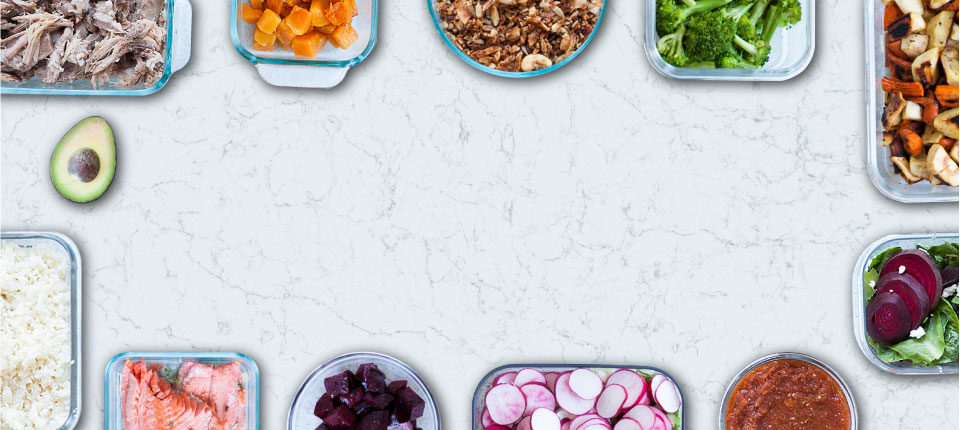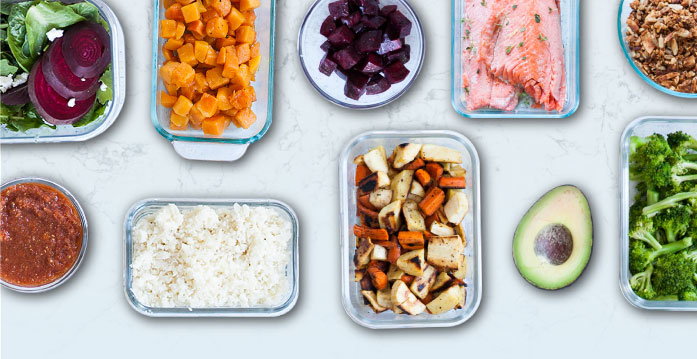Gluten has gotten a bad reputation and for good cause. Many folks struggle to digest wheat. But is all bread bad? It turns out that traditionally made sourdough is better for you. We love it in bread, pancakes, muffins, pizza, and more! Let’s see why…
What is sourdough
All bread is made via a form of fermentation. Flour and water are mixed to make a starter, or levain. When the flour and water combine, the mixture takes on the wild yeasts in the air, and ferments, colonizing healthy bacteria and yeast. You can also add commercial yeast to create a pre-fermented levain. This kind of levain is used once, is much quicker to make, and – while the bread may be tasty – it does not have the same health benefits as a slow-fermented starter.
Once a traditional levain starter begins to ferment, it grows and must be fed more flour and water in order to keep it alive. These microorganisms feed on the flour, breaking down the grain. Carbon dioxide results from the interaction of the yeast and bacteria and causes the dough to rise. Some bakers keep their starter alive for decades or even hundreds of years.
For the benefits of sourdough, the dough must undergo a slow fermentation process with no commercial yeast added. The amount of time necessary changes depending on type of flour used, temperature, and hydration (amount of water), but a general rule of thumb would be a minimum of 12 hours at room temperature.
Why true sourdough bread is better
Traditional sourdough bread ferments the flour, with a number of effects that render bread healthier and easier to digest. Besides being better for you, it tastes amazing, too.
Sourdough reduces phytates
Phytates are found in whole grains (as well as other whole seeds and nuts) and are the bond between minerals and phytic acid. When bound to phytic acid, we cannot absorb the minerals in food, even though they are included in the nutritional profile of a whole grain. The phytate bond must be broken in order for us to digest them.
When dough undergoes sourdough fermentation, the enzyme phytase breaks those bonds. If the acidity of the sourdough dips to pH 5.5, 70% of the phytate is reduced, availing minerals for assimilation, including phosphorus in the phytic acid. Studies show that reducing or increasing phytates has a direct impact on the assimilated amount of magnesium, iron, and zinc.
Fermentation helps the body digest protein
Not only do phytates bind with minerals, but they also inhibit the enzyme trypsin, a digestive enzyme that breaks down protein. When the phytate bonds are broken, then the body can digest protein properly.
When proteins are not properly broken down into peptides and then amino acids, they can irritate the gut wall, leading to inflammation and ‘leaky gut syndrome.’ One of the main proteins in wheat flour is gluten.
Fermentation breaks down some gluten compounds
The action of the lactobacilli on the dough starts the breakdown of gluten. Even if you don’t have celiac disease or gluten intolerance, gluten is still a large molecule and difficult to digest.
Gluten is made of two components, gliadin and glutenin. Gliadin negatively impacts those with celiac disease; glutenin provides the elasticity of gluten. Lactobacilli in sourdough break down the gliadin but not the glutenin, meaning, they break down the problematic part of gluten but not the structural part.
In one study, a four-hour ferment managed to break down 80% of the gliadin that would be broken down in 8 hrs. Another study found that under certain conditions, a sourdough culture could break down the gliadin proteins enough that they would not be toxic to those with celiac disease.
This is not to say that celiacs can go eat any sourdough; these analyses and experiments were made under controlled circumstances. These studies do, however, demonstrate the power of the bacteria and yeast of sourdough in breaking down gluten and rendering bread more digestible.
Sourdough stabilizes blood sugar levels
A comparison of four types of bread (white, whole wheat, whole wheat + barley, white sourdough) on blood sugar levels found that white sourdough had the least rise in blood sugar and insulin levels of participants. Not only that, but those who had white sourdough bread for breakfast continued to have low blood sugar levels even after lunch.
Scientists aren’t exactly sure why sourdough bread has such a stabilizing effect on blood sugar levels, but they think it may be because a sourdough fermentation changes the structure of the carbohydrates in bread, causing the body to assimilate it more slowly. The starches in the dough are predigested by the bacteria and yeast, making it easier on the digestive system.
Sourdough bread has probiotic benefits
Raw sourdough dough is full of beneficial microorganisms, and even though they are killed by heat during baking, they still may be of beneficial value to health.
Preliminary studies show that these organisms can reduce the incidence of the common cold, shorten the duration of diarrhea, and reduce inflammation.
Fermentation protects against mold
A number of acids produced by the Lactobacillus sanfrancisco, one of the main bacteria of a sourdough starter, have an antimold effect. Conventional bread can spoil and harbor mold before it is visible, and eating mold can be quite harmful. Sourdough bread, on the other hand, rarely molds.
Sourdough keeps you feeling full
Ever had a piece of bread and butter, and then another…and another? It can be easy to gorge on carbohydrate-rich foods, and never feel full.
Sourdough bread, on the other hand, has an increased amount of satiety–that is, you feel fuller longer after eating it. I have experienced this myself. A few sourdough pancakes keep me full all morning, while normal pancakes quickly leave me hungry. The benefit of increased satiety is that you can consume fewer calories without feeling hungry.
As you can see, traditional bread preparation is a far superior option to our modern shortcuts. Some people find that, while they can’t tolerate conventional bread, they can enjoy true sourdough bread without a problem.


